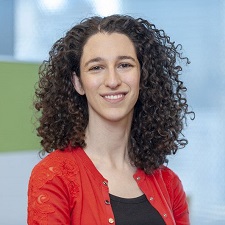The formation of complex organs such as the lungs is a largely elusive process in human development, though the fact that these complex structures are successfully reproduced over and over again suggests a strong underlying set of biological rules. Further, it has been shown that tumors and metastases can be viewed as aberrant organs, employing many of the same programs as in normal development. Understanding these rules and how they can be hijacked are long-standing critical questions in cancer research. While fascinating discoveries have helped decipher some of these rules, cell differentiation is chiefly governed by the cell’s three-dimensional (3D) environment. Dr. Wershof [William Raveis Charitable Fund Quantitative Biology Fellow] is using 3D biological data to study the architecture of different cells and genes interacting with each other in 3D space. The goal is to derive the spatial rules that drive lung formation, which will be key to our understanding of lung tumorigenesis.
Dr. Wershof will create a 3D canonical mammalian gut tube (GT) by integrating 3D, 2D, and single-cell data, quantifying GT surface meshes along the anterior-posterior, dorsal-ventral, and left-right axes. This will facilitate a deterministic mapping onto a reference GT. She will then utilize 2D Spatial Transcriptomics to build a “playbook” of gene covariate structure. She will refine the mapping via an iterative cost function, forcing the mapping within biological constraints imposed by the gene-gene covariance.








